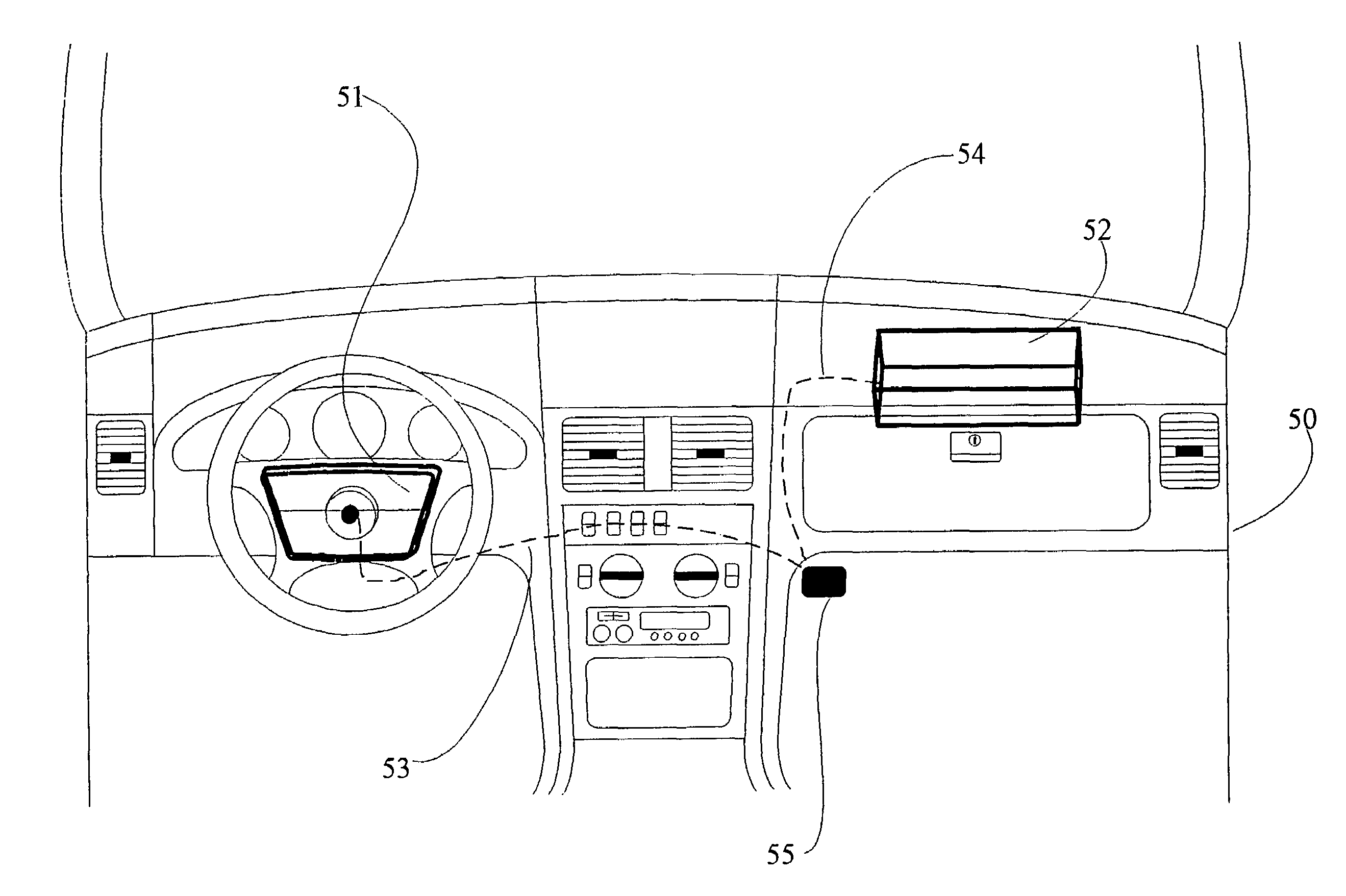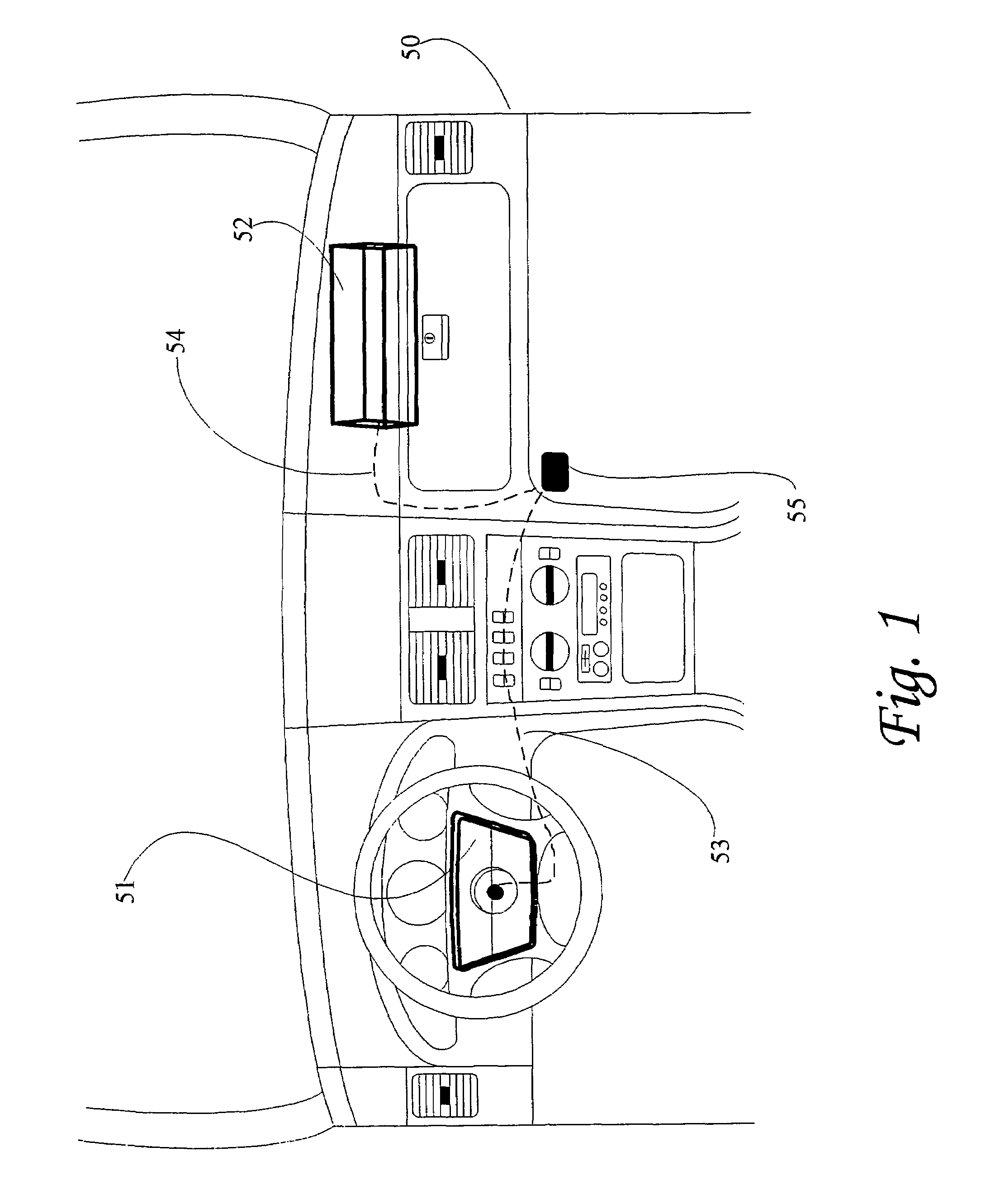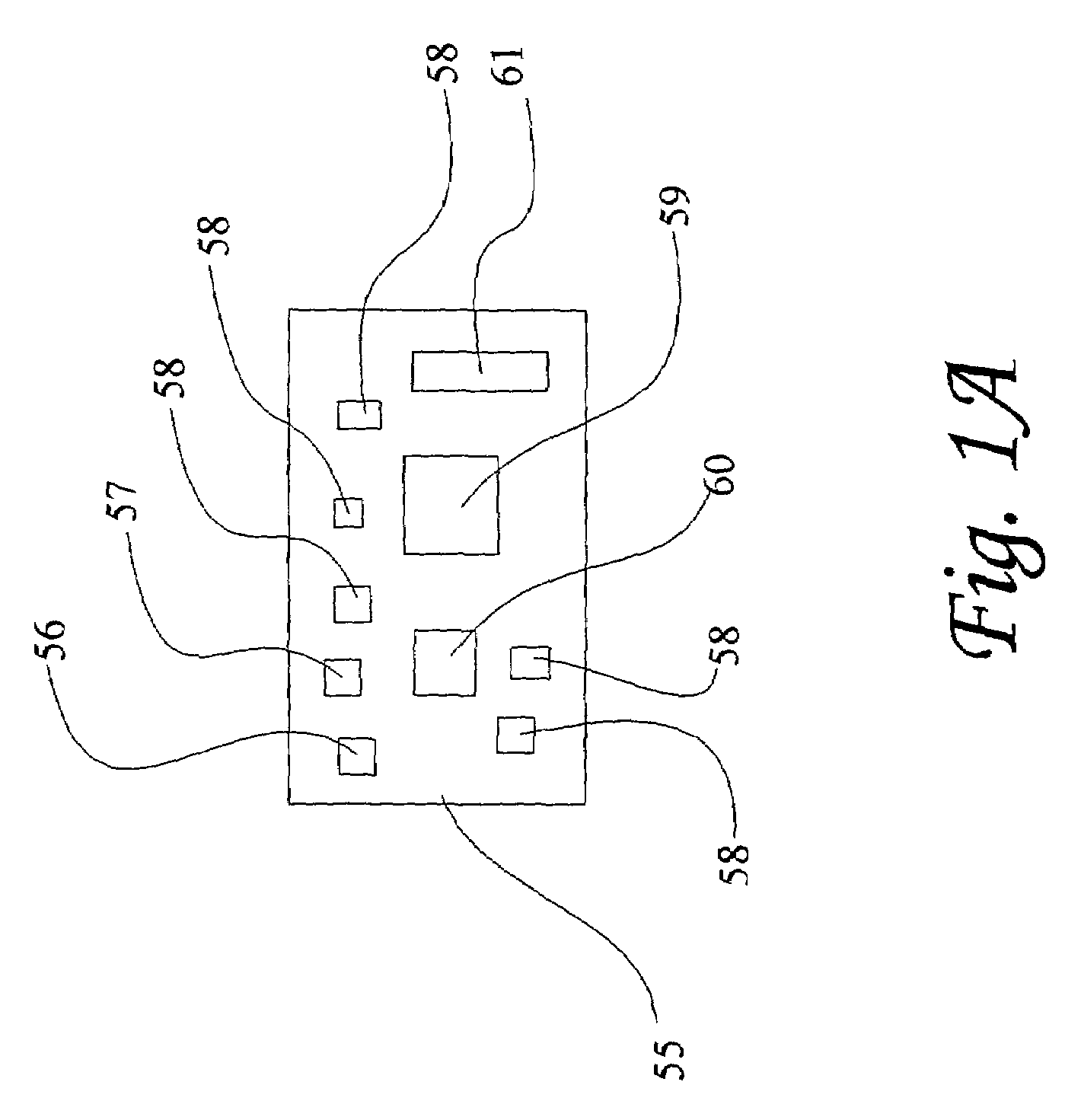Furthermore, such techniques were also not used to control the flow of gas into and / or out of an
airbag to tailor the
airbag inflation characteristics to the size, position and / or
relative velocity of the occupant or other factors such as seatbelt usage, seat and seat back positions, headrest position, vehicle velocity, etc.
The resulting
algorithm is not universal and most such engineers or crash sensor designers will answer in the negative when asked whether their
algorithm will work for all vehicles.
These papers demonstrate, among other things, that there is no known theory that allows an engineer to develop an
algorithm for sensing crashes and selectively deploying the
airbag except when the sensor is located in the crush zone of the vehicle.
These papers show that, in general, there is insufficient information within the acceleration
signal measured in the passenger compartment to sense all crashes.
In
spite of the problems associated with finding the optimum crash sensor algorithm, many vehicles on the road today have electronic
single point crash sensors.
Some of the problems associated with
single point sensors have the result that an out-of-position occupant who is sufficiently close to the airbag at the time of deployment will likely be injured or killed by the deployment itself.
Fortunately, systems are now being developed, and are in limited production, that monitor the location of occupants within the vehicle and can suppress deployment of the airbag if the occupant is more likely to be injured by the deployment than by the accident.
However, these systems are not believed to currently provide the information necessary for the control of airbag systems, or the combination of seatbelt and airbag systems, which have the capability of varying the flow of gas into and / or out of the airbag and thus to tailor the airbag to the size and / or weight of the occupant (and / or possibly another morphological characteristic of the occupant), as well as to the position, velocity and / or seatbelt use of the occupant.
These sensors are generally not sufficient for sensing side impacts as discussed in reference (11), however, they can be successful when used in conjunction with a passenger compartment mounted electronic sensor or as a safing sensor.
Other crush zone mounted crash sensors including crush switch designs where the width and height dimensions are comparable, must either be large and thus heavy, expensive and difficult to
mount, or there is a possibility that the randomly shaped crushed material which forms the boundary of the crush zone will bridge the sensor resulting in late triggering.
This crushed material frequently contains holes, wrinkles or folds or portions that may even be displaced or torn out during the crash with the result that it is difficult to guarantee that a particular small area where the sensor is mounted will be struck early in the crash.
It has been found that conventional designs of tape or ribbon switches have the drawback that the force required to close the switch is very small compared with the forces which are normally present in automobile crashes.
During routine maintenance of the vehicle, the normal tape switch may be damaged or otherwise made to close and remain closed, with the result that later, when the vehicle encounters a pot hole or other shock sufficient to cause the arming sensor to close, an inadvertent air bag deployment can result.
Similarly, if the tape switch is mounted on the front of the radiator support, which is a preferred mounting locating for crush zone sensors, hail, heavy rain, stones or other debris from the road might
impact the tape switch and cause a momentary closure or damage it.
If this happens when the vehicle experiences a shock sufficient to cause the arming sensor to close, an inadvertent air bag deployment might also occur.
Naturally, this
system is not perfect, however, it has been shown to do a better job than any other
sensor system now in use.
This is because many people suffer
whiplash injuries at rather low velocity impacts and if an
inflatable restraint is used, the repair cost may be significant.
Since the rear of a vehicle typically has about one third of the stiffness of the vehicle front, electronic sensors will have even a tougher time discriminating between trigger and non-trigger cases for rear impacts.
Since there is very little
signal out of the crush zone where electronic sensors are mounted, electronic sensors alone are not able to discriminate airbag required crashes from other crashes not requiring
airbag deployment.
Thus, although they cannot be reliably used alone as a discriminating sensor for side impacts, the combined
system does function properly.
Since neither of these can be assumed, the device will not provide a measurement of the impacting velocity and therefore at best can act as an
impact-sensing switch with some discriminating capability.
It is known that currently up to about 70% of vehicle occupants sit closer to the airbag than the average male and therefore such sensors trigger
airbag deployment late for such occupants placing them at risk of being injured by the airbag.
The basic problem has been that an airbag should not be deployed unless the approaching object can be identified as a serious
threat.
In
spite of these advantages, self-contained airbag systems have only achieved limited acceptance for frontal impacts and have so far not been considered for side impacts.
The “all-mechanical” self-contained systems were the first to appear on the market for frontal impacts but have not been widely adopted partially due to their sensitivity to accelerations in the vertical and lateral directions.
These cross-axis accelerations have been shown to seriously degrade the performance of the most common all
mechanical design that is disclosed in Thuen, U.S. Pat. No. 04,580,810.
Both frontal and
side impact crashes frequently have severe cross-axis accelerations.
Additionally, all-mechanical self contained airbag systems, such as disclosed in the Thuen patent, require that the sensor be placed inside of the inflator which increases the strength requirements of the inflator walls and thus increases the size and weight of the system.
One
disadvantage of this system is that a hole must still be placed in the inflator wall to accommodate the percussion primer that has its own housing.
Another
disadvantage in the Thuen system that makes it unusable for side impacts is that the arming system is sealed from the environment by an O-ring.
This sealing method may perform satisfactorily when the system is mounted in the protected passenger compartment but it would not be satisfactory for
side impact cases where the system would be mounted in the vehicle door where it can be subjected to water, salt,
dirt, and other harsh environments.
Self-contained electrical systems have also not been widely used.
In contrast to mechanical systems, the electronic sensor and diagnostic systems used by most vehicle manufacturers are expensive.
Mechanical sensors, however, are not capable of implementing such algorithms and thus researchers now believe that there are a significant number of crashes that cannot be sensed in time in the passenger compartment by mechanical sensors and that this will require the addition of another sensor mounted in the crush zone (see, for example, reference 5 below).
Some of these problems do not apply to side impacts mainly because side
impact sensors must trigger in a very few milliseconds when there is no significant
signal at any point in the vehicle except where the car is crushing or at locations rigidly attached to this crush zone.
These elongated side impact crush-sensing switches are not readily adaptable to the more compact self-contained designs.
If a wire is severed during a crash but before the airbag deploys, the system may lose its power and fail to deploy.
This is more likely to happen in a side impact where the wires must travel inside of the door.
Finally, the space available for mounting airbag systems in the
doors of vehicles is frequently severely limited making it desirable that the airbag module be as small as possible.
If the gas is not permitted to enter the passenger compartment, the temperature of the gas can be higher and the products of
combustion can contain toxic chemicals, such as
carbon dioxide.
However, depending on the seated state of an occupant, there are cases where his or her life cannot be saved even by present airbag systems.
For example, when a passenger is seated on the front passenger seat in a position other than a forward facing,
normal state, e.g., when the passenger is out of position and near the deployment door of the airbag, there will be cases when the occupant will be seriously injured or even killed by the deployment of the airbag.
Also, sometimes a child seat is placed on the passenger seat in a rear facing position and there are cases where a child sitting in such a seat has been seriously injured or killed by the deployment of the airbag.
Furthermore, in the case of a vacant seat, there is no need to deploy an airbag, and in such a case, deploying the airbag is undesirable due to a high replacement cost and possible release of toxic gases into the passenger compartment.
Nevertheless, most airbag systems will deploy the airbag in a vehicle crash even if the seat is unoccupied.
Thus, whereas thousands of lives have been saved by airbags, a large number of people have also been injured, some seriously, by the deploying airbag, and over 100 people have now been killed.
As discussed in detail in U.S. Pat. No. 05,653,462, for a variety of reasons vehicle occupants may be too close to the airbag before it deploys and can be seriously injured or killed as a result of the deployment thereof.
Also, a child in a rear facing child seat that is placed on the right front passenger seat is in danger of being seriously injured if the passenger airbag deploys.
Every automobile driver fears that his or her vehicle will breakdown at some unfortunate time, e.g., when he or she is traveling at night, during
rush hour, or on a long trip away from home.
When a vehicle component begins to fail, the repair cost is frequently minimal if the impending failure of the component is caught early, but increases as the repair is delayed.
Sometimes if a component in need of repair is not caught in a timely manner, the component, and particularly the impending failure thereof, can cause other components of the vehicle to deteriorate.
One example is where the water pump fails gradually until the vehicle overheats and blows a
head gasket.
In these cases, the warning often comes too late as most vehicle gages alert the driver after he or she can conveniently solve the problem.
Other drivers can sense that their vehicle is performing differently but they don't know why or when a component will fail or how serious that failure will be, or possibly even what specific component is the cause of the difference in performance.
There are no systems currently on automobiles to monitor the numerous vehicle components over time and to compare component performance with normal performance.
Additionally, there is no system currently existing on a vehicle to look for erratic behavior of a vehicle component and to warn the driver or the dealer that a component is misbehaving and is therefore likely to fail in the very near future.
Sometimes, when a component fails, a catastrophic accident results.
Similarly, other component failures can lead to loss of control of the vehicle and a subsequent accident.
The smart airbag problem is complex and difficult to solve by ordinary mathematical methods.
It is one problem to predict that a crash has a
severity level requiring the deployment of an airbag.
To also simultaneously consider the influence of occupant size, weight, position and / or velocity, renders this problem for all practical purposes unsolvable by conventional methods.
“Out-of-position” as used for an occupant will generally mean that the occupant, either the driver or a passenger, is sufficiently close to an occupant protection apparatus (airbag) prior to deployment that he or she is likely to be more seriously injured by the deployment event itself than by the accident.
It may also mean that the occupant is not positioned appropriately in order to attain the beneficial, restraining effects of the deployment of the airbag.
Thus, the state of the vehicle could be normal when the vehicle is operating properly on a highway or abnormal when, for example, the vehicle is experiencing excessive angular inclination (e.g., two wheels are off the ground and the vehicle is about to
rollover), the vehicle is experiencing a crash, the vehicle is skidding, and other similar situations.
 Login to View More
Login to View More  Login to View More
Login to View More 


